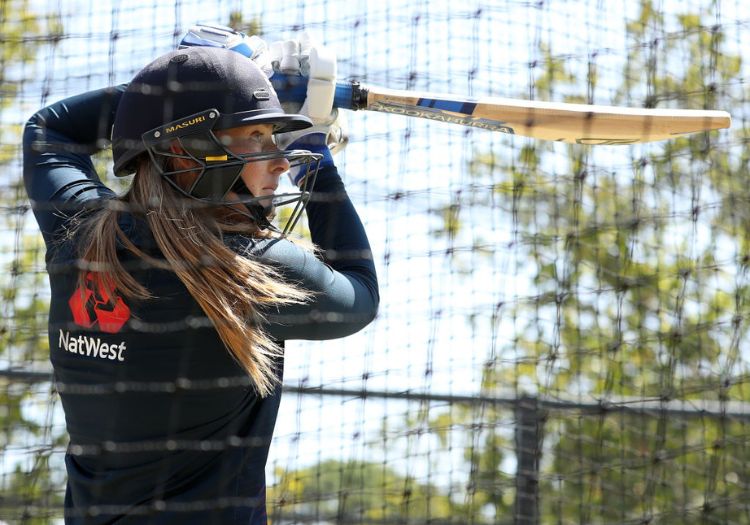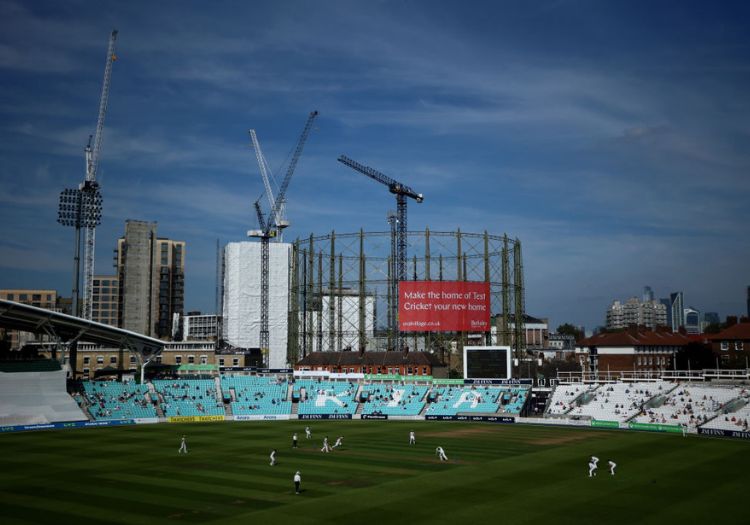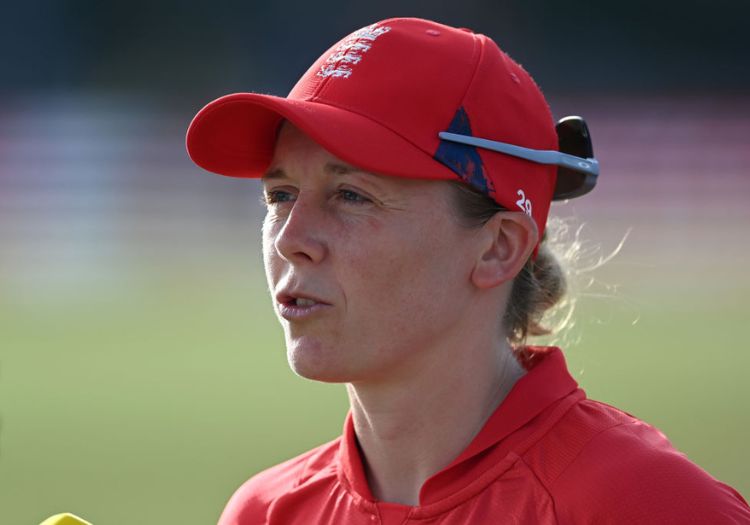ANDY FROMBOLTON looks at the benefits of becoming one of eight proposed 'tier one' women's cricket counties and whether the market can support the change of structure

The ECB's decision to commit significant sums to the women's game is hugely positive and demonstrates a genuine commitment to equality of opportunity.
Similarly, the credo that ownership (and thereby accountability and a share of future reward) is far more likely to drive innovation, growth and professionalism than a top-down approach where funding is guaranteed and independent of performance.
The ECB has now published details of the process by which it intends to facilitate this transition and unfortunately, it is both flawed and ill-thought out.
They have sent an Invitation To Tender (ITT) to all 18 men's first-class counties plus MCC seeking expressions of interest in becoming one of eight proposed 'tier one' (premier) women's cricket counties.
It is based on are three key components: a detailed description of the desired service, including timescales, minimum service levels, and expectations; an explanation of the tender process; and, evaluation criteria and assessment.
To make an informed decision, an interested party would therefore need the ITT; the evaluation criteria; and two other documents referenced in the ITT, which are a funding agreement (called the County Partnering Agreement ('CPA2'), which would run from 2025-2028; and a Venue Agreement which would run from 2025-2031.
The publicly available documents raise a number of obvious questions. To start with, both the CPA2 and the Venue Agreement are still being drafted, which leads me to having concerns over the process and the resources committed to it.
It is also unclear why the Venue Agreement would extend beyond the initial four-year term, especially given the stated possibility of promotion and relegation after 2028.

A familiar sight since the women's regional restructure - victorious Souther Vipers (Philip Brown/Getty Images)
Furthermore, the evaluation criteria and their respective weightings have been issued to the FCCs and the MCC but, for reasons unknown, the ECB has chosen not to make them public.
The ITT identifies the current women's structure of eight regions as a major point of difference with the men's game and emphasises the benefits which could arise from greater alignment.
However, the decision to invite MCC to bid is nonsensical since it has no equivalent men's county team. More fundamentally, whilst the club has obvious assets there is no player pathway, coaching or admin resource to run a team: in short, how can they be expected to set up a team within the specified timeframes - especially given that the ITT expressly prohibits joint or consortium bids (the MCC cannot partner with an FCC).
Indeed, any successful bidder which doesn't currently host a regional centre will find the timeframes very tight given that successful bidders will be notified by September 2024 and the new structure won't come into effect until less than three months before the start of the 2025 season.
Despite the CPA2 having not yet been issued, the ITT states that each tier one county will be provided a minimum of £1.3m during the initial four-year term with ring-fenced funding for player salaries, sports science, medicine provision, and talent pathway.
However, there is no reference to this amount being index-linked and, more critically, what financial support would be available beyond this period. Combined with references to the need for the women's game to move onto a sustainable footing, is the implication that beyond 2028 tier one counties cannot expect similar levels of funding?
It is expressly stated that successful applicants will be expected to invest directly in their women's team.
"I believe that the next chapter – starting with this invitation to tender – is less about the separate transformation of women’s cricket, and more about evolving the whole game together"
Beth Barrett-Wild, ECB director of women's professional game
Becoming a tier one county is presented as an "opportunity for clubs to futureproof their identity in a gender-balanced way, for players, staff, and fans" and also "a chance for FCCs / MCC to access rights and own an asset in the fastest growing market and audience growth space for cricket: the women's game".
Firstly, since all FCCs will continue to have a women's team the ECB needs to be very careful that it doesn't inadvertently send a message that counties which don't have a tier one team risk are somehow less committed to women's cricket.
At least 10 men's FCCs (or 11 if the MCC's bid is successful) won't host a tier one women's team regardless of how well they demonstrate a commitment to women's cricket. Yet they will form a key component of the pathway.
Secondly, The Hundred, partly by design and partly by luck, is the ECB's premier showcase for women's cricket. London Spirit women are based at Lord's and Middlesex and enjoy the associated kudos and goodwill which comes from being seen as the home of a team playing at the highest level of domestic women's cricket. The same goes for Hampshire and Southern Vipers. Surrey have gone further in seeking to strengthen the association between a supposedly regional team and the host by declaring they want the Oval Invincibles rebranded as a Surrey team.
So, the decision of whether to bid for a tier one team will not be the same for all FCCs. For a Hundred host, the issue is what additional benefit is there? The situation is different for an FCC which isn't a Hundred host which seeks the benefits of being publicly associated with the next highest level of domestic cricket.
What is common to both is that the ITT requires an FCC to accept that additional financial benefit will flow to any county awarded tier one status. Benefits could be direct e.g. T20 games could be run as double headers (which might support higher ticket prices and draw fans into grounds earlier) and Sky might pay a bit more, but it's unrealistic to expect any such extra income to be significant in the short term.

The Kia Oval - home of Surrey and Oval Invincibles (Ben Hoskins/Getty Images for Surrey CCC)
Having a Tier 1 women's team would be one of many equally worthy initiatives to make cricket a 'sport for everyone' and hence its specific contribution would be very hard to quantify. Ultimately FCCs are businesses and many have perilous finances. Just being a passionate and committed tier two county could be the most sensible decision for most counties if their analysis was sufficiently objective.
Finally, given the stated possibility of relegation/promotion between the tiers after 2028, the business case for clubs to invest their own money during the formative becomes even less clear.
No one would dispute that women's sports is growing rapidly and the ITT depicts a virtuous cycle of improving quality attracting more fans which generates increasing revenue which in turn feeds back into improving the quality.
The ITT also cites figures for the global value of women's elite sport and trends in revenue growth. But, it does not automatically follow that cricket will mirror the success of women's golf, tennis or WSL football.
Partly, future success will be in the hands of those who brand, market and sell the game as well as the players to deliver an entertaining product, but no one can possibly know what the appetite is for more women's cricket, how spectators might consume and engage with it, and, critically, their willingness to pay for it.
To compound the issue for bidders, we don't actually know what the starting point is. Partly, this is a consequence of the ways in which broadcast rights have historically been sold, but partly because it has suited the ECB's narrative not to explore or test the market.
Hitherto, the rights to women's cricket have been bundled with the associated men's rights so we have no idea the value which broadcasters might assign to it if it was bifurcated. Broadcasters too recognise the arguments for diversity and inclusion, but ultimately their offers will be driven solely by business considerations: advertising, sponsorship and subscriptions.
"To continue moving forward, and to make cricket a gender-balanced sport – which is a core part of our wider collective mission – we need a change in the ownership model and governance structure underpinning the women’s professional game"
Richard Gould, ECB chief executive
The ICC has started to sell men's and women's rights separately whilst the ECB's domestic deal with Sky runs until 2028 which would be the first opportunity to split the rights.
This means that the only dedicated revenue stream are ticket sales for the England women's matches plus negligible incomes from regional teams' ticket and merchandise sales.
Regarding ticket pricing, it would be easy to ascertain the public's appetite to pay for women's cricket if the ECB experimented with double headers involving two women's Hundred games, stand-alone games or be creative around ticket offers.
Across the initial seasons, the ECB have simplistically claimed that any person in a ground halfway through a women's game on a double-header day counts towards the attendance figure: perhaps they'd rather not know the answer?
This attitude will have to change before 2028 when the initial period expires and FCCs will be expected to pick up an increasingly (unknown) percentage of the running costs of their tier one teams.
The ITT states that an evaluation panel will use a balanced scorecard to assess each submission against a set of 11 criteria. As previously mentioned, the ECB has chosen not to publish the scorecard or the weightings.
However, the accompanying Q and A sheet states that the evaluation panel will need to "consider the creation of an even distribution of teams according to geographical spread and population density as an overlaying condition when making their final selection decisions".
The need for this caveat is obvious. If e.g. Surrey, Kent, Sussex, MCC and Essex were to submit five of the best bids it clearly wouldn't be sensible to award them all tier one status.

The ECB have uneven data around attendance across the three seasons of The Hundred (Harry Trump/Getty Images)
But conversely, if ensuring geographical spread and proportional population representation is to be an "overlaying condition" then satisfying this consideration must ultimately trump all other evaluation criteria.
It is therefore worth considering how well the current regional arrangements satisfy this overlaying consideration. The answer is pretty well.
Minor adjustments to the current arrangements would produce 5 'regions' of similar population size and geographic coherence: north-west, north-east, west Midlands plus north Wales, east Midlands plus Norfolk/Suffolk, south-west and south Wales.
One option would be to leave the regions as they are – allowing Sussex and Hants to compete for the southern region, Kent and Surrey for the southeast, and Essex, Middlesex and MCC for the north London / south Anglian area. However, this would perpetuate a 'Vipers' area which is too large, a 'Sunrisers' area which is too small and an over-represented London.
To address all three of these issues, the three regions could be carved up differently with a south coast region (covering Hants, Sussex and Kent), a single London region, and a northern Home Counties region.
In either scenario, FCCs who aren't currently regional hosts need to be confident that if they submit the better bid then they will be awarded tier one status – even if current regional hosts Hampshire, Surrey and Middlesex all lost.
The overarching objective to ensure geographical spread totally changes how different bidders might respond depending on their location and the feasibility of other local FCCs submitting bids.

England captain Heather Knight (Gareth Copley/Getty Images)
There are only four credible bidders for the four northern regions and, those counties are in a very strong position to play hardball on any ECB's terms they deem unreasonable. And whatever is agreed with them, the governing body can't then expect other bidders to accept more onerous terms.
In the south-west, both Gloucestershire and Somerset have expressed an interest. But they might conclude that it would be financially imprudent to bid once the contents of the CPA2 are known. What would happen if neither county bid or counter-proposed significantly different financial arrangements?
Regarding the three other bids, as noted above, there are at least two permutations which could see counties oust the current regional hosts.
If a current regional host was unsuccessful, there will be significant issues regarding the financial consequences. Several regions have signed multi-year contracts with players which go beyond the end of 2024 which they'd still be obliged to honour even though their revenue stream had been removed. Similarly, coaching and support staff may also need to be made redundant.
In terms of geographic equity, today all counties run (amateur) women's teams regardless of whether they also host a region. The potential to play as an amateur in tier one counties would disappear which is to discriminate against non-contracted players in this county. For this reason, tier one counties should also be obliged to run a separate amateur women's team which should compete in tier two or three competitions.